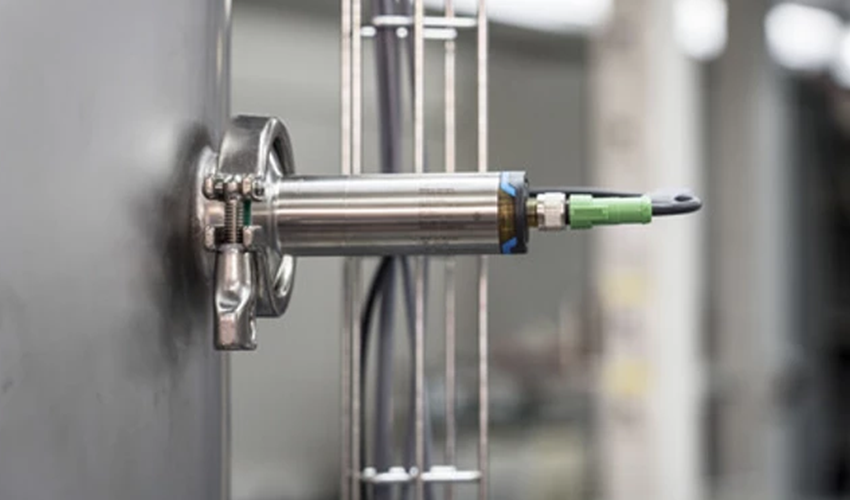
Since the beginning of the 20th century automated cleaning has been used by the Food & Beverage industry to increase both product safety and plant productivity. Even though the factors that affect the cleaning efficiency (temperature, chemicals, flow and time) are well known and controlled by the industry today, the hygienic conditions after the CIP (Clean in Place) can only be accepted after time-consuming manual inspections and equipment disassembly, especially in areas with a potential risk of contamination.
In order to attain increased process reliability, the CIP process often relies on longer cleaning cycles that impacts plant availability and increases the risk of wasting resources including water, chemicals and energy. However, the uncertainty of whether the product residues have been completely removed by cleaning still remains, especially in areas where mechanical factors can influence process performance and applications where the product properties vary.
With this perspective, how exactly can I optimise my CIP cycles?
Instead of evaluating the cleanliness based on time and manual inspections, a more elegant approach is to use an online build-up sensor installed at strategic areas. The information before the cleaning allows you to define when to start your cleaning based on how dirty your process is and also to define your CIP settings for the optimal performance in terms of energy and time consumption. There’s a brilliant quote from an entrepreneur called Allan Dib, who says that “a broken company will spend time to save money whereas a successful one will spend money to save time”, this is an interesting way of thinking of the impact of time saving in your plant: You can always obtain more money, but you can never get more time.
Build-up measurement after cleaning, allows you to check and evaluate the complete cycle, acting as an additional piece of information about the process to help the validation and report of the CIP’s performance. This is a powerful tool for continuous improvement of time and resource consumption as well as the identification of process anomalies and equipment deficiencies that may have occurred during the cleaning. It can help you to quickly identify when and where to check the installation in case of CIP performance doubts, ensuring that even the toughest areas are clean without the need of process disruption.
How exactly do I monitor build-up online?
A reliable build-up measurement can be done using a sensor that simulates the exact same condition as the inner part of pipes and tanks to ensure that the product interaction with the sensor’s measuring area will be the same as the product with the process. Following the market trends on CIP optimisation, Endress+Hauser launched the Liquitrend QMW43, the newest sensor dedicated to monitor the build-up and conductivity in hygienic applications.

The measurement is made using a capacitive (build-up) and conductive principle in a flush mounted surface that allows the reliable detection of conductive and non-conductive of very thin product layers on the process and equipment surfaces.
Increasing the process safety and quality
In cleaning applications, the conductivity measurement is a well-known and used process control parameter responsible to identify and measure the concentration of chemicals, acting as a safety resource to avoid product contamination and also to ensure the effectiveness of the cleaning. The combination of the conductivity and capacitance measurements allows you to identify the nature of the build-up and understand if it was caused by your product or by cleaning agents, preventing the build-up or chemical transfer to your product and helping you cut the product loss by less contaminated product being sent to the drain.
Another great application example that can be explored using the Liquitrend QMW43 is the possibility to differentiate products not only based on the conductivity but also based on the dielectric constant (DC) of the media, this helps to get a clear and reliable indication of what kind of product is being processed.
This amazing resource can be applied in batch applications where there’s a need to confirm that the product properties are the same between them, eg, in syrup mixing applications in the soft drink industry.
In addition to the standard control parameters already used in CIP skids, build-up measurement is a powerful resource that can help with product safety. Build-up detection using the Liquitrend QMW43 can be continuously logged using an analog output or IO-Link communication helping keep track of the complete cleaning and production cycle.
Quality aspects can also be optimised by avoiding cross-contamination based on the conductivity measurement and the batch-to-batch consistency can now be monitored online to ensure product consistency and reduce laboratory analysis load. But more importantly, it brings a complete new way of checking how clean your process is in a fully automatic and reproducible way, allowing you to save one of the most important scarce assets we have: time.
